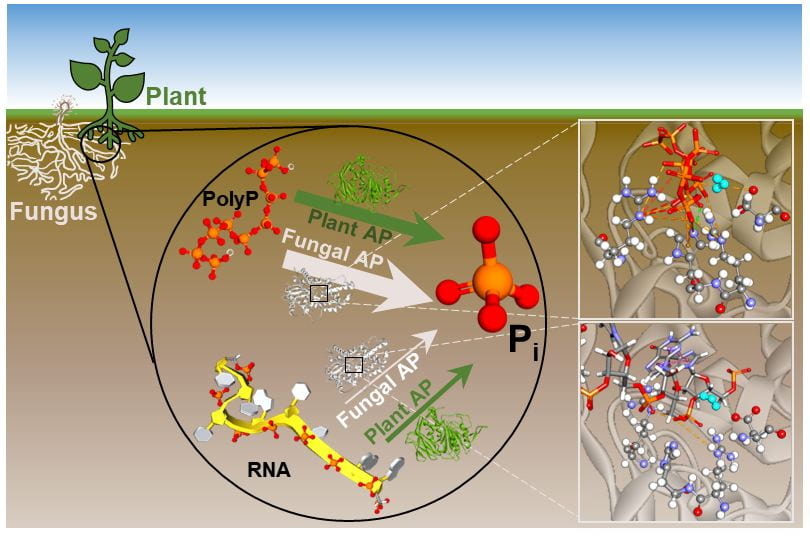TITLE: Selectivity in Enzymatic Phosphorus Recycling from Biopolymers: Isotope Effect, Reactivity Kinetics, and Molecular Docking with Fungal and Plant Phosphatases
–ABSTRACT Among ubiquitous phosphorus (P) reserves in environmental matrices are ribonucleic acid (RNA) and polyphosphate (polyP), which are, respectively, organic and inorganic P-containing biopolymers. Relevant to P recycling from these biopolymers, much remains unknown about the kinetics and mechanisms of different acid phosphatases (APs) secreted by plants and soil microorganisms. Here we investigated RNA and polyP dephosphorylation by two common APs, a plant purple AP (PAP) from sweet potato and a fungal phytase from Aspergillus niger. Trends of δ18O values in released orthophosphate during each enzyme-catalyzed reaction in 18O-water implied a different extent of reactivity. Subsequent enzyme kinetics experiments revealed that A. niger phytase had 10-fold higher maximum rate for polyP dephosphorylation than the sweet potato PAP, whereas the sweet potato PAP dephosphorylated RNA at a 6-fold faster rate than A. niger phytase. Both enzymes had up to 3 orders of magnitude lower reactivity for RNA than for polyP. We determined a combined phosphodiesterase-monoesterase mechanism for RNA and terminal phosphatase mechanism for polyP using high-resolution mass spectrometry and 31P nuclear magnetic resonance, respectively. Molecular modeling with eight plant and fungal AP structures predicted substrate binding interactions consistent with the relative reactivity kinetics. Our findings implied a hierarchy in enzymatic P recycling from P-polymers by phosphatases from different biological origins, thereby influencing the relatively longer residence time of RNA versus polyP in environmental matrices. This research further sheds light on engineering strategies to enhance enzymatic recycling of biopolymer-derived P, in addition to advancing environmental predictions of this P recycling by plants and microorganisms. [Link to Article]
